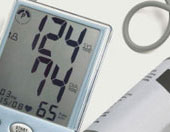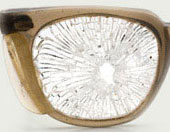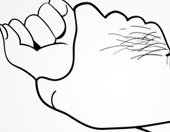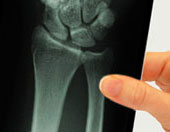Vitamin D deficiency in America:
Who's at risk? Why is is a concern?
Posted in General Health & Wellness on February 20, 2012. Last modified on March 28, 2019. Read disclaimer.

By Daniela Radulescu, M.D., member of Medical Advisory Board for TriVita, makers of Essential D vitamin D supplement.
In recent years, many researchers and the media have touted the health benefits of Vitamin D. It's been shown to be especially beneficial in protecting against colds and the flu, maintaining bone and muscle and reducing the risk of certain cancers. But we've also heard that a majority of people are deficient in this powerhouse vitamin, which suggests that supplementation may be necessary. The problem is that recommendations for intake have varied over the years, creating confusion for those who seek the maximum health benefits.
+ Free Shipping & Returns on Eligible Items.
(*Amazon's Top 100 list updated hourly.)
An epidemic: Vitamin D deficiency
According to experts, anywhere from two thirds to 95% of Americans are lacking Vitamin D. Globally, it's estimated that as much as 50% of the world's population is at risk for deficiency. That's especially alarming considering that Vitamin D deficiency has been associated with an increased risk of many serious diseases, including cancer, osteoporosis, Alzheimer's disease and diabetes.
So what causes Vitamin D deficiency? It's primarily a lack of sunlight. You see, Vitamin D is produced in the skin by UVB light, and with our increasingly indoor culture, people aren't getting enough sun exposure. And when they do head outside, they tend to cover themselves with sunscreen, which can block Vitamin D production. (SPF 8 sunscreen reduces production of vitamin D by 95%!)
In winter, it becomes even more difficult to get the sunshine required, especially for those who live at high latitudes. In fact, those who live north of 35 degrees latitude (around Atlanta, GA) are likely to produce little -- if any -- Vitamin D during winter. In times past, people could build up reserves of Vitamin D through summertime sun exposure. But again, the move toward indoor pursuits has made this buildup less and less likely.
Groups most at risk for Vitamin D deficiency include infants fed exclusively breast milk, people with dark skin-color, the elderly, and those with diseases such as cystic fibrosis, cholestatic live, inflammatory bowel disease, or obesity.
So, how much Vitamin D is enough?
If so many people are deficient, the next question becomes, how much Vitamin D should they get each day? In summer sun, a person in a swimming suit (without sunscreen) can make approximately 10,000 international units (IU) of Vitamin D in just 15 minutes. In the late 1990s, that figure led researchers to speculate that 10,000 IU of Vitamin D daily appeared to be safe. However, most official recommendations fall well below that number.
In 2010, the independent, nonprofit Institute of Medicine (IOM) released guidelines that recommended adults get 600 IU of Vitamin D to maintain healthy bones, with an upper limit of 4,000 IU. This caused an uproar in the medical community, as research had shown much more Vitamin D was required to reduce the risk of the serious conditions linked to Vitamin D deficiency. Plus, research had shown that toxicity only occurred at 40,000 or more IU per day.
In 2011, the Endocrine Society, a body of international hormone specialists, published guidelines recommending 1,500-2,000 IU for adults, with an upper limit of 10,000 IU, to prevent and treat Vitamin D deficiency.
The nonprofit Vitamin D Council contends that for proper functioning, a healthy adult body uses approximately 3,000-5,000 IU per day. Thus, it recommends at least 5,000 IU of supplemental Vitamin D3 per day for adults, in absence of proper sun exposure. Vitamin D3 is the kind naturally produced by the body.
So again, we ask the question: how much is enough? The answer: it depends. Individual needs for Vitamin D vary based on current levels, age, weight, overall health, amount of sun exposure and even genetics. To determine how much Vitamin D you need, ask your health care provider for a Vitamin D blood test. You will need to have your Vitamin D levels tested and then monitored periodically to ensure you're getting the right amount.
Remember, an adequate supply of Vitamin D has been proven to help protect against colds and the flu, maintain bones and muscles and even help reduce the risk of certain cancers.

 High blood pressure risk factors
High blood pressure risk factors Protecting your eyes and eyesight
Protecting your eyes and eyesight Living safely with house pets
Living safely with house pets Natural body detox through exercise
Natural body detox through exercise Domestic violence assistance
Domestic violence assistance Important role of grandparents
Important role of grandparents Concerns and risks of Vitamin D deficiency
Concerns and risks of Vitamin D deficiency What is carpal tunnel syndrome?
What is carpal tunnel syndrome? Poison oak, ivy and sumac rash prevention
Poison oak, ivy and sumac rash prevention Safety tips for preventing food poisoning
Safety tips for preventing food poisoning